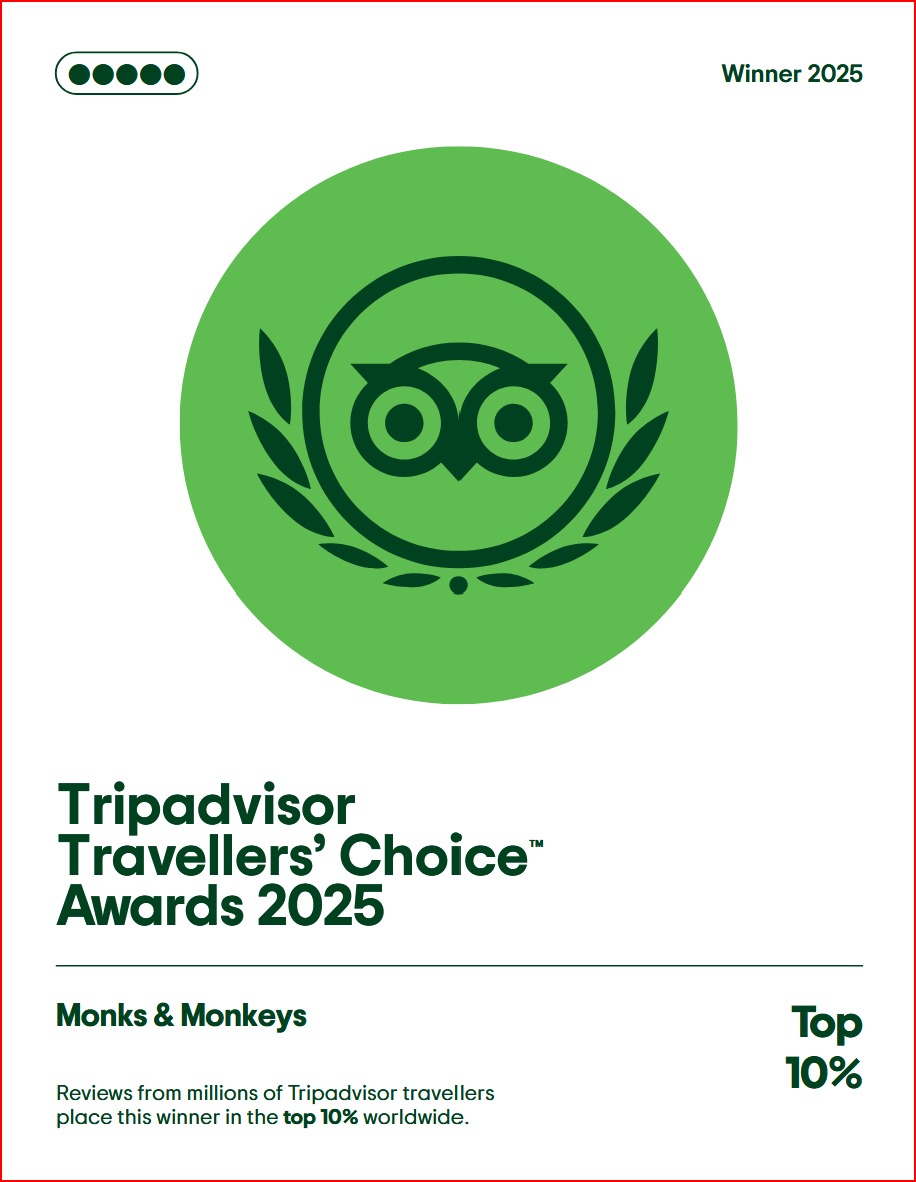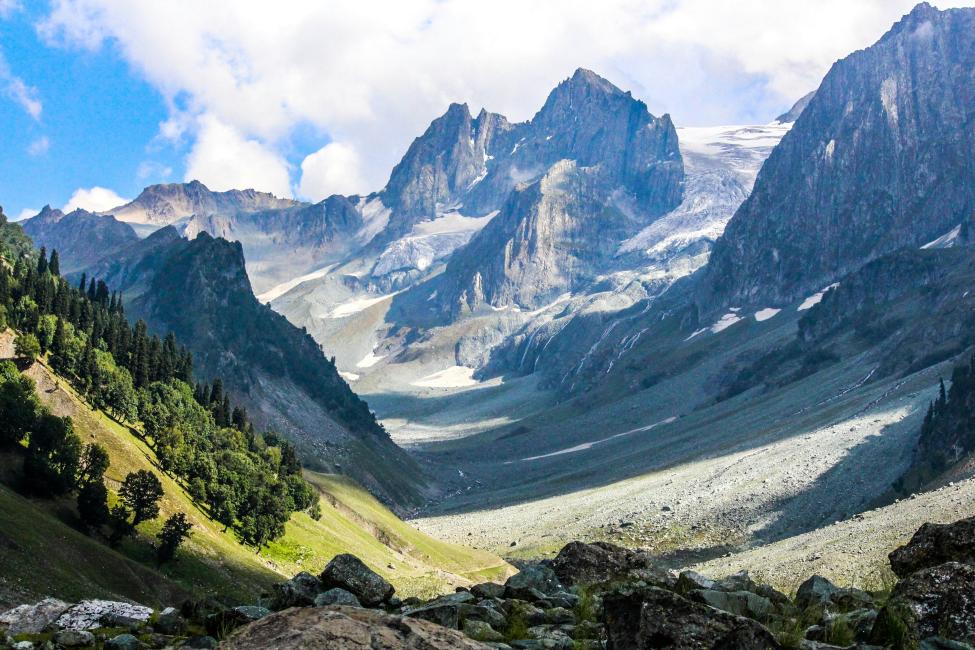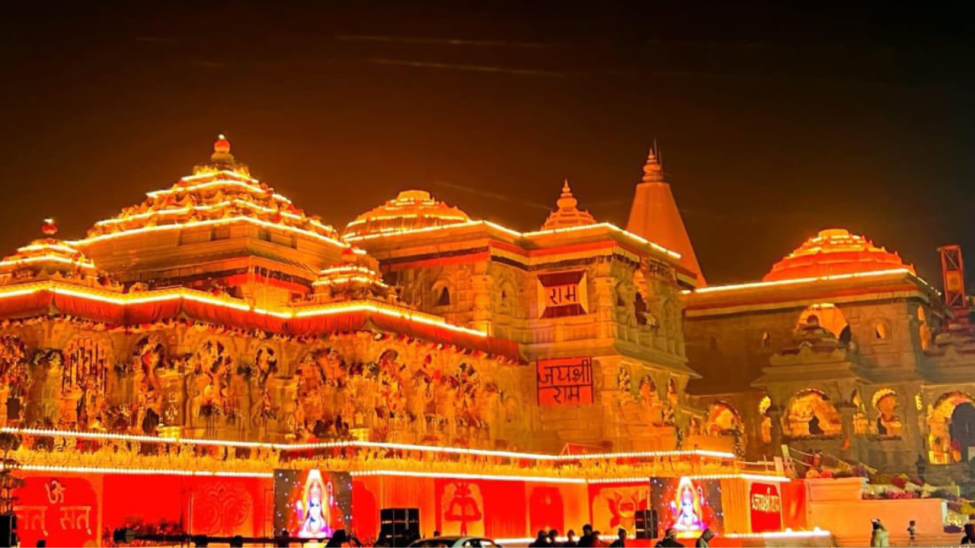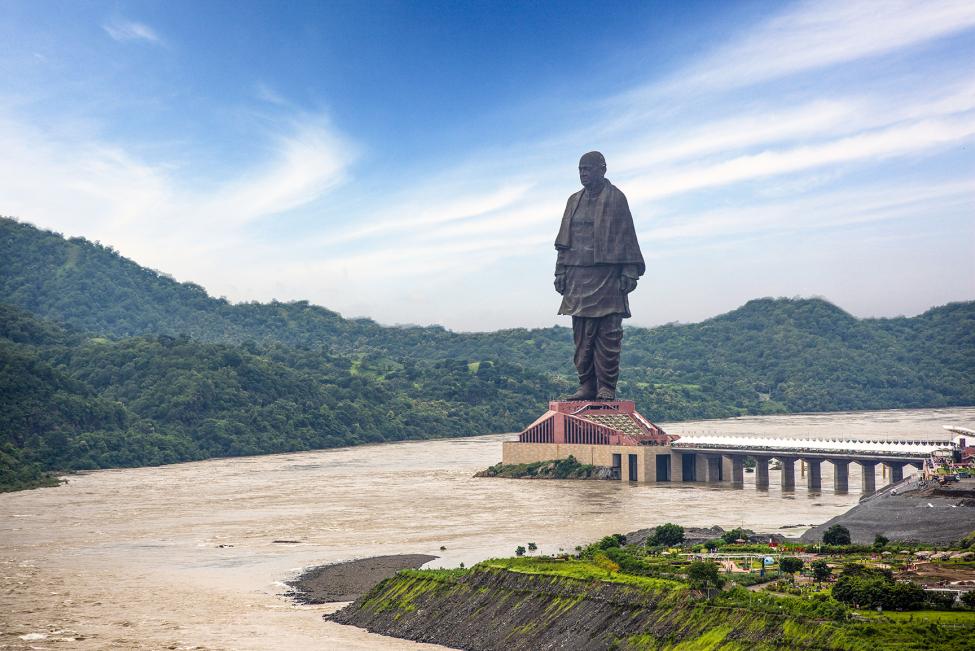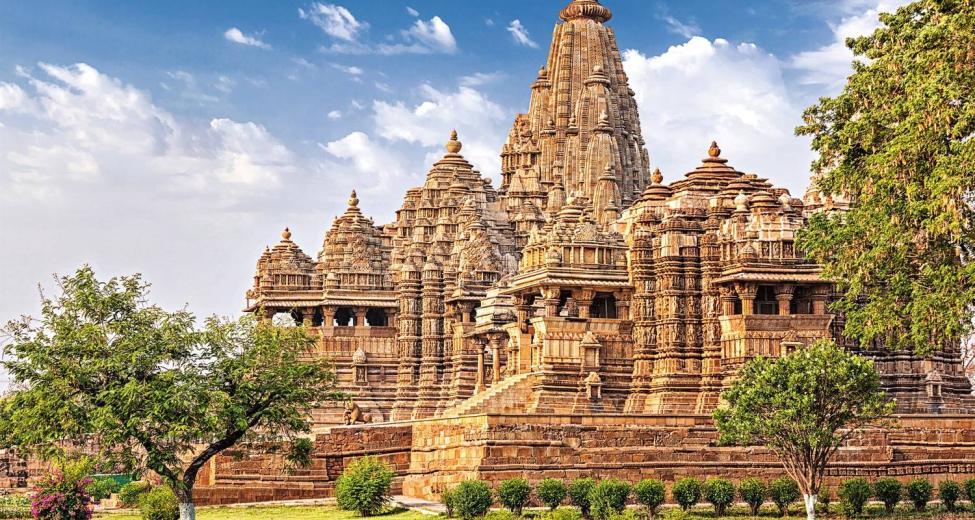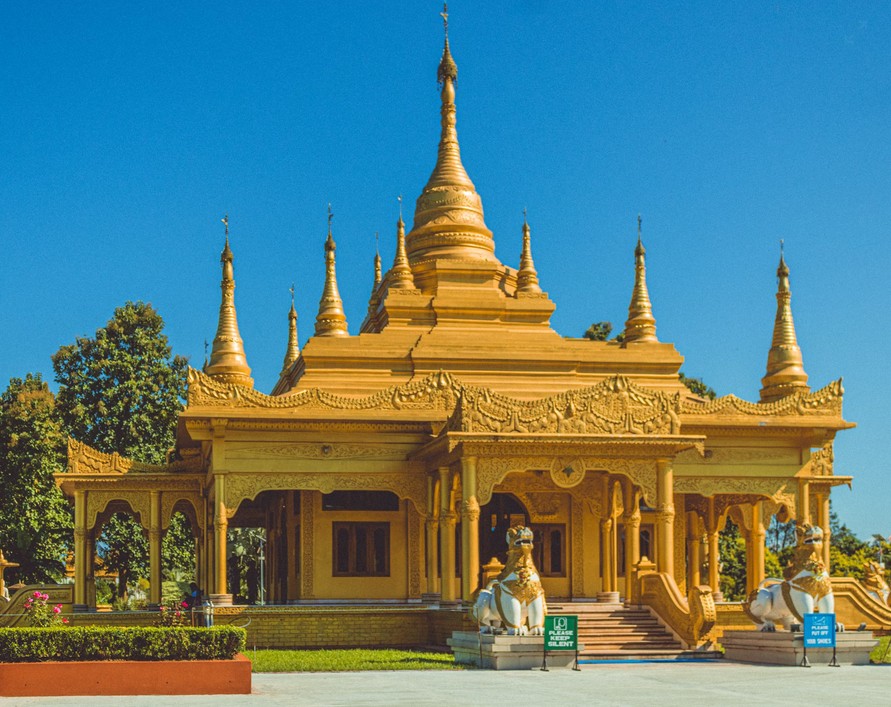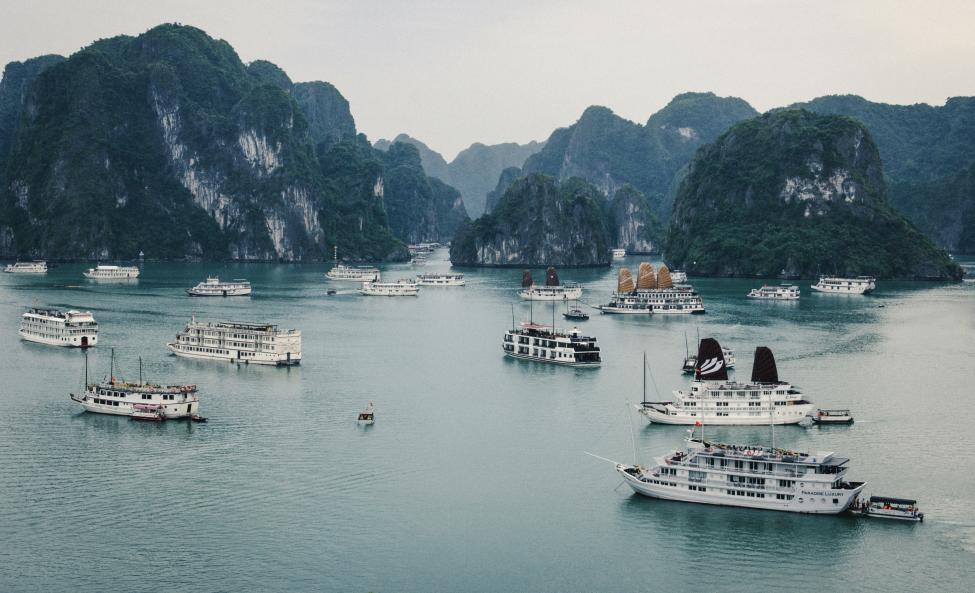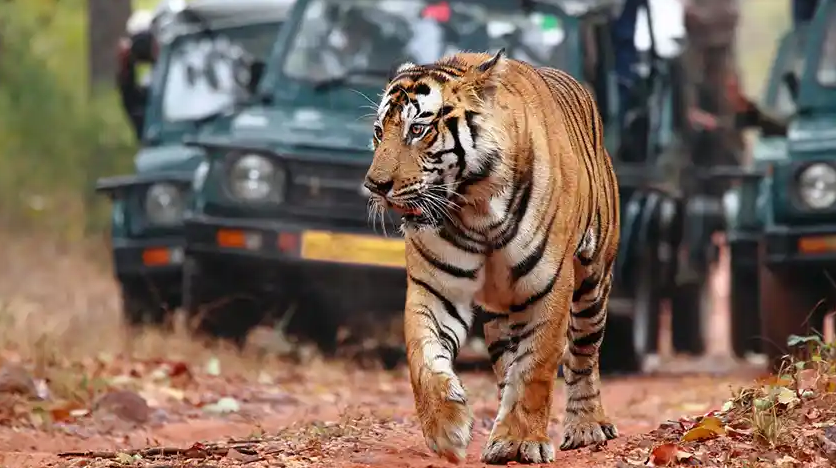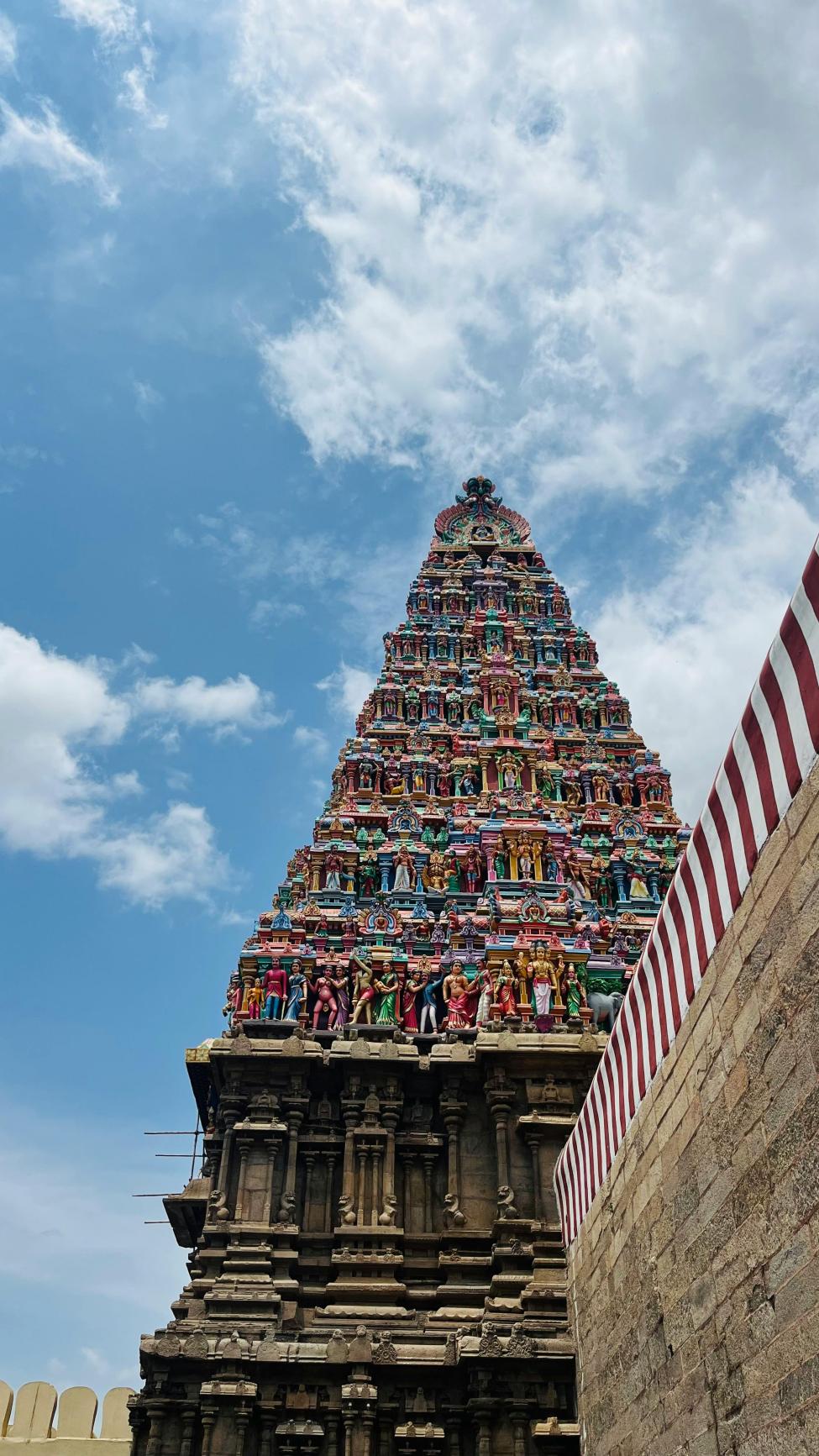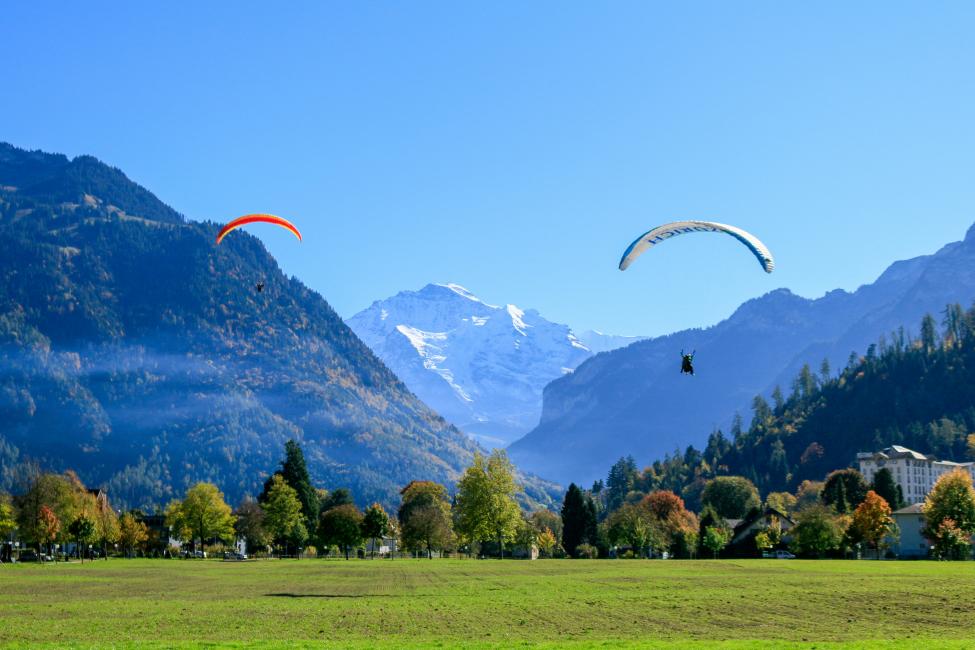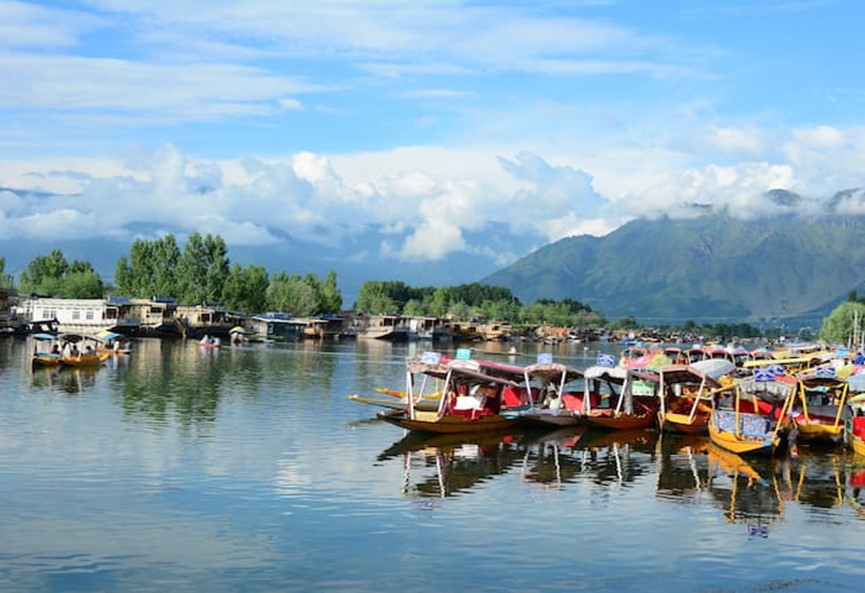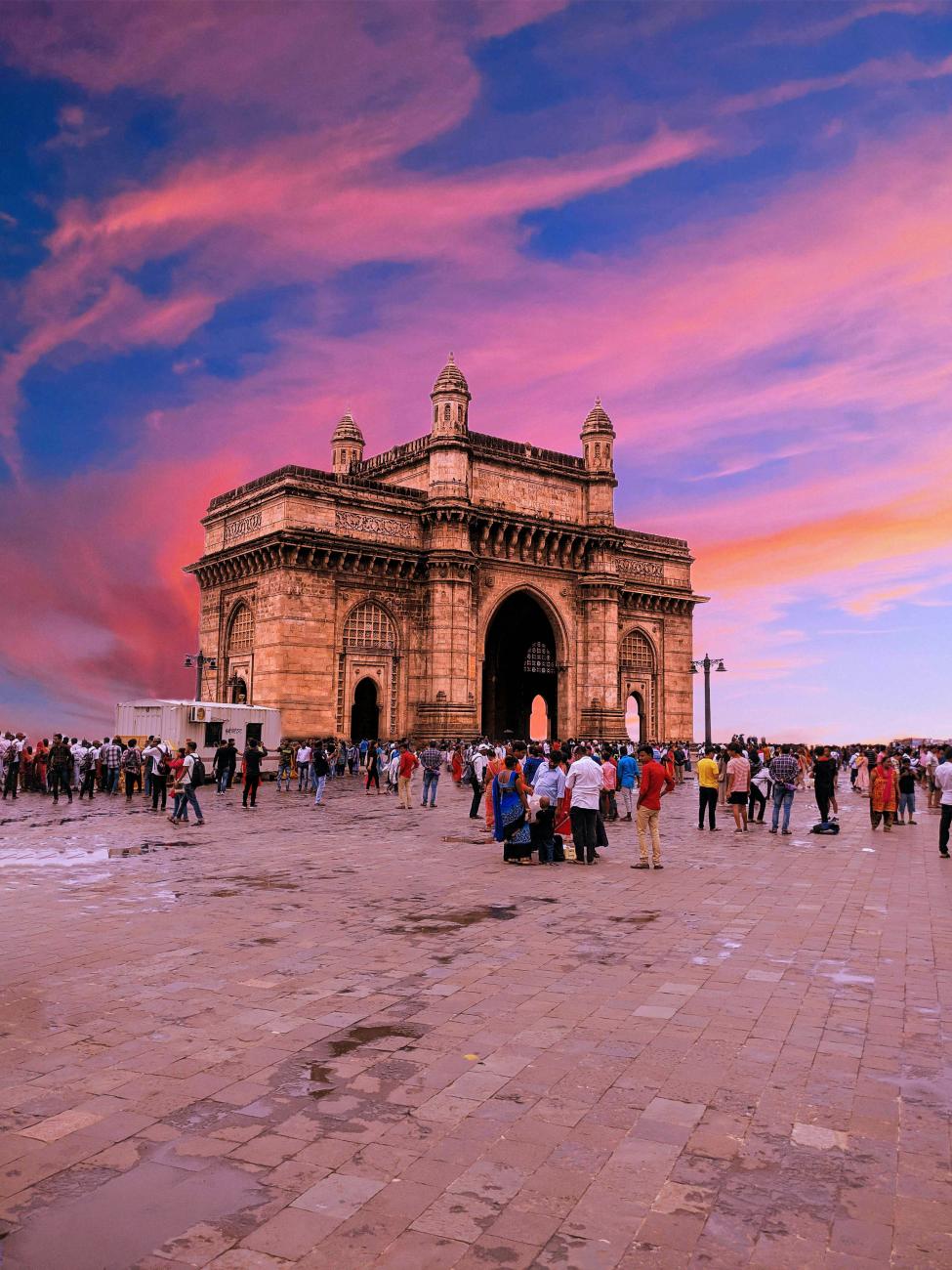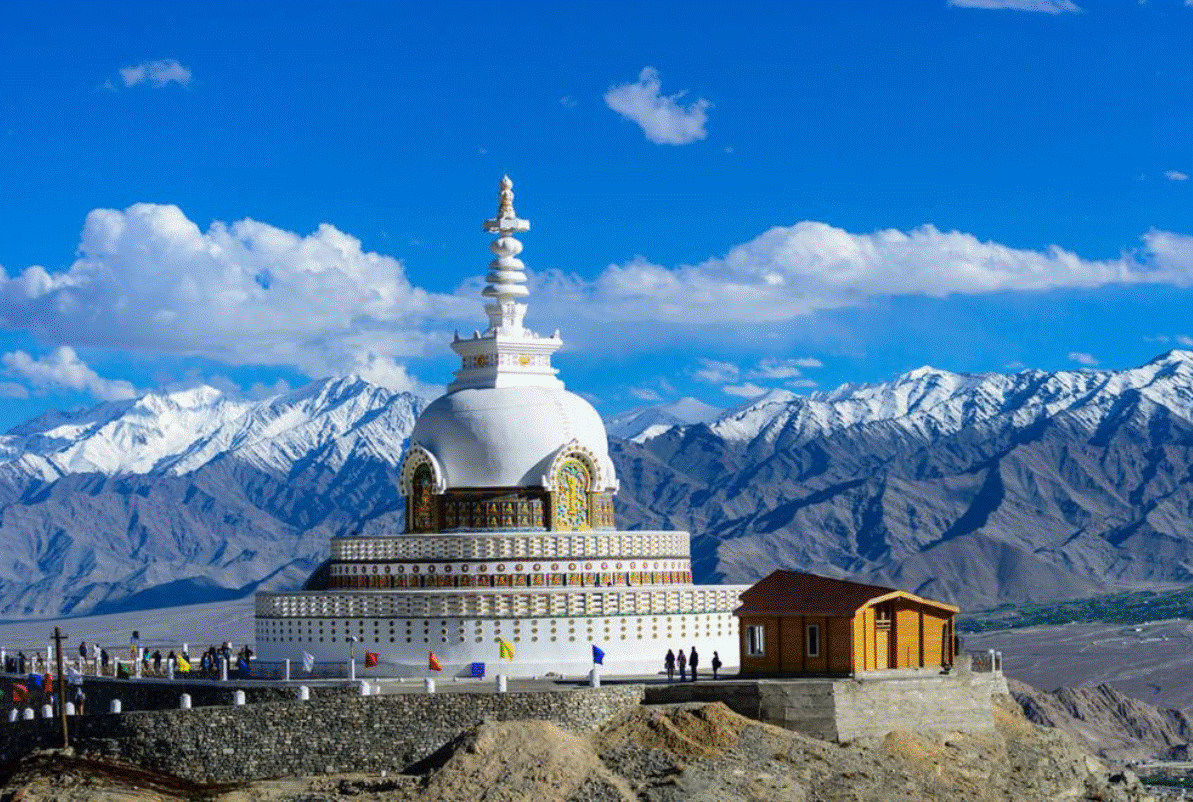 Shanti Stupta, Leh
Shanti Stupta, Leh
Leh Ladakh The Ultimate Travel Guide & Itinerary - Your Journey to the Roof of the World
High, stark, remote, spiritual, and raw - Leh & Ladakh is one of those places that doesn’t just show you new landscapes, it quietly reshapes your perspective. In a world of noise and hurry, Ladakh speaks in whispers of wind, in silence of high deserts,
Why Leh & Ladakh Should Be on Your Travel Bucket List:
Leh & Ladakh is often called the “Roof of the World” - and for good reason. Stretching across rugged mountains, high-altitude deserts, and glacial valleys, this region is a living canvas of nature’s most dramatic artwork. If you’re planning a trip to Ladakh, it’s not just a journey of distance; it’s a journey of perspective. Every traveler who sets foot here quickly realizes that Ladakh is a place where time slows, air feels thinner, colors are more vivid, and every sunrise and sunset feels like a personal gift from the mountains.
For many, Leh Ladakh is the ultimate adventure destination. The region’s high passes, such as Khardung La and Chang La, are among the highest motorable roads in the world. The thrill of driving or biking across these passes is a bucket-list experience for adventurers. From road trips starting at Delhi via Manali or Srinagar, to offbeat trekking routes along the Zanskar Valley, Ladakh offers something for every thrill-seeker. But what makes it truly remarkable is that adventure here is always intertwined with nature, spirituality, and local culture.
Natural Beauty Like No Other:
Ladakh’s landscapes are a photographer’s dream. Imagine staring at a vast desert where the sand meets the sky, or a turquoise lake reflecting snow-capped peaks in crystal clarity. Pangong Lake and Tso Moriri are two of the most famous high-altitude lakes that capture the imagination of every traveler. Pangong Lake, located at over 4,200 meters, is famous for its changing colors - from deep blues to emerald greens - depending on the time of day and the angle of sunlight. Tso Moriri, quieter and less crowded, offers a serene experience amid rugged mountains, where migratory birds often make an appearance.
Beyond the lakes, Ladakh’s valleys, including Nubra Valley, Suru Valley, and Zanskar Valley, showcase dramatic contrasts. Nubra, with its sand dunes at Hunder and double-humped camels, feels almost like another planet. Zanskar, more remote and less visited, offers pristine landscapes, frozen rivers in winter for the Chadar Trek, and a rare glimpse into traditional Himalayan life untouched by modern development. Every valley has its own personality - some inviting adventure, others solitude, and yet others spiritual introspection.
Culture, Monasteries, and Spiritual Heritage:
One of the unique aspects of Leh & Ladakh is its deep-rooted Tibetan-Buddhist culture. The region is dotted with monasteries, locally called gompas, which are not just spiritual centers but also cultural repositories. Hemis Monastery, known for its grand festival featuring masked dances and traditional music, is a must-visit. Thiksey Monastery is famed for its towering Maitreya Buddha statue and panoramic views of the Indus Valley. Shey Monastery and Palace, once the summer palace of Ladakhi kings, hold centuries of history in their walls. Visiting these monasteries allows travelers to experience the serene lifestyle of monks, witness ancient murals, and feel the calm that pervades these sacred spaces.
Festivals add a colorful dimension to Ladakhi life. Losar, the Tibetan New Year, and the Hemis Festival are celebrated with great enthusiasm. Vibrant masks, music, traditional dances, and rituals create a spectacle that is both spiritual and entertaining. Planning your trip to coincide with these festivals offers a rare chance to witness traditions that have been preserved for centuries.
Adventure Opportunities Beyond Roads:
Ladakh is not just about scenic drives and lakes; it’s a haven for adventure lovers. Trekking routes like Chadar Trek (winter), Markha Valley Trek, and Stok Kangri Base Camp provide challenges and rewards in equal measure. Mountain biking across high passes, river rafting in the Zanskar, and camel safaris in the Nubra sand dunes ensure that adrenaline junkies never run out of options. Even paragliding enthusiasts can find opportunities near Leh, adding another dimension to experiencing the vast landscapes from above.
Travelers searching online often want to know the safest way to enjoy these adventures. Altitude sickness is a real concern, given that Leh sits at around 3,500 meters and many passes go beyond 5,000 meters. Acclimatization, gradual elevation gain, hydration, and rest days are crucial. Planning your itinerary with buffer days for rest and acclimatization not only ensures safety but also enhances the experience - letting you enjoy the serene environment rather than feeling fatigued.
Road Trips: An Integral Part of the Experience:
Many travelers dream of a road trip to Leh, either from Manali or Srinagar. Both routes are famous for breathtaking landscapes, thrilling mountain passes, and tiny villages tucked into remote valleys. The Manali-Leh Highway is known for its adventure quotient, crossing multiple high passes such as Rohtang La, Baralacha La, and Tanglang La. On the other hand, the Srinagar-Leh Highway offers a scenic approach with relatively gradual altitude gain, passing through the famous Zoji La Pass, Drass (one of the coldest inhabited places in India), and Kargil. These drives are not just about reaching Leh; the journey itself is transformative, revealing landscapes that are often unlike anything else in the world.
Travelers also frequently search for tips on road conditions, vehicle choices, and travel safety. Reliable drivers, proper permits, vehicle maintenance, and timely weather checks are essential for a smooth trip. Many people also consider hiring bikes for a more personal adventure, or joining guided road trips for a balance of freedom and security.
Food, Local Experiences, and Souvenirs:
Ladakhi cuisine is simple yet hearty, perfect for high-altitude living. Thukpa, momos, skyoo, and butter tea are staples that visitors love. Many travelers search for local experiences, like cooking classes in homestays or tasting traditional foods directly from Ladakhi kitchens. Visiting local markets in Leh provides a glimpse into everyday life and offers opportunities to buy authentic handicrafts, pashminas, prayer flags, and jewelry, supporting local artisans.
Homestays are increasingly popular, as they allow visitors to experience local culture up close. Staying with a Ladakhi family, participating in daily routines, and hearing stories passed down through generations adds depth to your journey — turning a trip into a personal narrative rather than just sightseeing.
Planning Essentials: Permits, Safety, and Travel Tips:
Before visiting Ladakh, travelers often search for permit requirements, health precautions, travel insurance, and connectivity issues. For Indian nationals, an Inner Line Permit (ILP) is required to enter restricted areas like Nubra, Pangong, and Tso Moriri. Foreign nationals need Protected Area Permits (PAP). These can be obtained online or at official offices in Leh and other checkpoints. Carrying multiple copies of permits and ID proofs is advised, as there are numerous checkpoints along the way.
Safety is paramount - altitude sickness, road conditions, and extreme weather can all affect the journey. Packing essentials include layers of warm clothing, thermal wear, good trekking shoes, sunglasses, sunscreen, lip balm, and basic medical supplies. Many travelers also ask about cash availability, mobile connectivity, and reliable accommodations - it’s important to carry cash for remote areas, as ATMs and digital payment options are limited.
Why Leh & Ladakh Continues to Captivate Travelers:
Ladakh is a destination that answers many search queries travelers have: adventure, solitude, spiritual experiences, nature, and culture. Its raw beauty, combined with the warmth of local people, makes it one of the most satisfying travel destinations in India. Every traveler leaves with stories - stories of star-filled nights at Pangong, camel rides in Nubra, meditation in monasteries, and endless mountain roads stretching into the horizon.
When people research Leh Ladakh travel tips, they want more than just a checklist; they want guidance on how to experience the essence of this magical land safely and meaningfully. This guide aims to address those queries comprehensively - from planning, acclimatization, and permits to itineraries, cultural insights, and safety tips.
In essence, Leh & Ladakh is more than a place. It is a journey of discovery - of landscapes, culture, spirituality, adventure, and even self-awareness. It demands respect, patience, and curiosity. But the reward is unmatched: memories, experiences, and a perspective that will stay with you long after you descend from the Roof of the World.
1. Planning Your Trip: Best Time & Duration:
Best Time to Visit Leh & Ladakh:
The high Himalayan roads that connect Ladakh are open only part of the year. The ideal window is late May to early October. Outside this window, many passes are closed by snow, and conditions become unpredictable.
- In June to early July, the region starts awakening from winter, roads open, landscapes are fresh.
- July - August sees peak tourism, relatively warmer days but cooler nights, occasional rain/landslides on approach roads.
- September offers crisp clear skies, fewer crowds, golden-hued landscapes.
- By October, many roads begin to shut again.
2. Acclimatization & Health Tips (Altitude Matters):
One of the critical parts of any Ladakh trip is respecting altitude. Leh sits at about 3,500 m (11,500 ft), and many passes exceed 5,300 m (17,400 ft). You can’t rush the mountains.
Why Acclimatization Is Important:
Without proper acclimatization, you risk Acute Mountain Sickness (AMS) - symptoms include headaches, nausea, dizziness, shortness of breath, and in severe cases, edema. The body needs time to adjust to thin air.
Daily Strategy for Acclimatization:
- On Day 1, after arrival, rest completely. Don’t plan treks or high-pass drives.
- Stay hydrated: drink plenty of water (3 - 4 liters).
- Avoid alcohol, smoking, and heavy meals initially.
- Eat light meals, rich in carbohydrates.
- Move slowly - ascend gently, walk slowly, avoid overexertion.
- If symptoms persist (severe headache, vomiting, breathlessness), descend immediately.
Some travelers carry altitude medicines (e.g. acetazolamide), but use them only after consulting a doctor. Also carry a small first-aid kit.
3. Getting There: Routes, Flights & Road Trips:
By Air (Fastest but Needs Acclimatization Buffer):
Leh has an airport (Kushok Bakula Rinpoche Airport). Many travelers prefer to fly into Leh and then move outward. However, flights are weather-dependent and often subject to delays.If you fly in, aim to arrive early in the day so you have daylight for your first gentle walk (not much more). Remember: landing itself is a shock to your system.
Road Trips: Delhi → Leh via Two Main Routes:
Road trip is an adventure in itself. There are two popular overland routes from Delhi to Leh (or vice versa):
1- Via Manali:-
Route: Delhi → Chandigarh → Manali → Keylong → Sarchu → Leh
This route crosses multiple high passes like Rohtang La, Baralacha La, Lungalacha, Tanglang La, etc. It’s adventurous but roads may be rough. Use this when roads are open (usually June to September).
2- Via Srinagar / Kargil:-
Route: Delhi → Jammu → Srinagar → Sonamarg → Zoji La → Drass → Kargil → Leh
This is considered smoother in sections, with more gradual altitude gain. It’s scenic (valleys, rivers, mountains) but has risk of landslides or road closures, especially during monsoon.
Distance & Time Estimates for Leh & Ladakh:
- The Srinagar route is approximately 1,035 km, usually taking 2 - 3 days of travel (with stops) to reach Leh.
- The Manali route is about 770 km to Leh via high passes. But since the roads are tougher, you’ll take more breaks.
4. Leh & Ladakh Permits & Regulations:
Because many parts of Ladakh lie near international borders, Inner Line Permits (ILP) are required for Indian nationals, and Protected Area Permits (PAP) for foreign nationals, for places like Nubra Valley, Pangong, Tso Moriri, and certain border zones.
- You can often get permits online via official Ladakh tourism portals or via travel agents in Leh.
- Some permits are issued on the spot in Leh, but it’s safer to get them earlier.
- Always carry multiple copies of your permits, identity proof (Aadhar, passport), passport-size photos.
- There may be check posts; keep your permits handy.
Check current rules before you travel - permit policy sometimes changes depending on security conditions.
5. Sample Itineraries (6 to 10 Days):
Here are two sample plans you can adapt:
6-Day's Leh & Ladakh Itinerary (Fast-paced but doable):
| Day | Plan |
| Day 1 | Arrive Leh → rest and acclimatize, short walk in Leh market |
| Day 2 | Leh local sightseeing: Leh Palace, Shanti Stupa, Shey, Thiksey Monastery |
| Day 3 | Drive Leh → Nubra Valley via Khardung La → explore Diskit, Hunder sand dunes |
| Day 4 | Nubra → return toward Pangong side, en route stops |
| Day 5 | Pangong Lake overnight at camp |
| Day 6 | Return to Leh, shopping & departure |
9-Day's Leh & Ladakh Itinerary (Relaxed, buffer built-in):
| Day | Plan |
| Day 1 | Arrival, rest, light exploration in Leh |
| Day 2 | Leh local & surroundings (Stok, Shey, Thiksey) |
| Day 3 | Leh to Nubra — via Khardung La, stay in Nubra |
| Day 4 | Explore Nubra, hot springs, local villages |
| Day 5 | Nubra to Pangong side (or via intermediate stops) |
| Day 6 | Pangong Lake overnight |
| Day 7 | Pangong → Tso Moriri or back toward Leh via scenic route |
| Day 8 | Explore scenic valleys, monasteries or side trips |
| Day 9 | Return to Leh, relaxed last day, departure |
You can add more if you want to include Suru, Zanskar, Hemis, Chadar (in winter),
6. Leh Ladakh Key Destinations & Highlights:
Leh Town & Its Surroundings:
- Leh Palace: A nine-storey palace overlooking Leh, built around 1600 AD by King Sengge Namgyal.
- Shanti Stupa: Offers panoramic views of Leh, especially magical at sunrise/sunset.
- Local market & old town alleys: Wander through narrow lanes, buy prayer flags, pashminas, local crafts.
- Shey Monastery / Palace: Located 15 km south of Leh, contains a large Buddha statue.
- Thiksey Monastery: A beautiful monastery perched above, offering views and spiritual calm.
- Hemis Monastery: One of the most significant monasteries in Ladakh.
- Read more about Leh Sightseeing
Nubra Valley:-
- Khardung La pass: One of the world’s highest motorable passes (5,359 m per sources) connecting Leh to Nubra Valley.
- Diskit Monastery: With a giant Maitreya Buddha statue and stunning views.
- Hunder dunes & double-humped camels: Enjoy camel rides in the high desert dunes.
- Panamik hot springs: A relaxing soak after dusty travel days.
- Villages like Turtuk: A border village with its own unique culture.
- Read more about Nubra Valley
Pangong Lake / Tso Moriri:-
- Pangong Lake: Famous for changing colors with light, starry nights, and serene beauty.
- Tso Moriri / Tso Kar: Less visited, quieter, more pristine high-altitude lakes.
- Read more about Pangong lake,
Side Valleys, Trekking, and Alternatives:-
- Sham (Apricot) Valley: Along the Indus corridor; treks and rural life.
- Suru Valley, Zanskar side trips: If time permits, explore deeper valleys.
- Chadar trek (winter): Trek over frozen Zanskar river in January/February. One of the most extreme winter treks.
- Adventure options: rafting in Zanskar or Indus (in summer), day hikes, biking on passes.
High Mountain Passes:-
Besides Khardung La, you’ll cross:
- Chang La - en route to Pangong
- Namika La, Photoksar, Tsokar passes
- In the Manali route: Rohtang La, Baralacha La, Tanglang La etc.
7. Where to Stay in Leh & Lasakh: Camps, Guesthouses & Homestays:
One of the joys of Ladakh is variety in lodging:
- Permanent Camps / Tented Camps: At Pangong, Tso Moriri or high-lake areas. Sleep under stars, but prepare for cold nights.
- Guesthouses / Guesthouses in Leh, Nubra: Basic to mid-range, run by families or local operators.
- Homestays: Offers authentic local experience, home-cooked food, stories, warmth.
- Luxury / Boutique lodges: In Leh or some valleys (if available).
Book ahead (especially in peak season), but leave some flexibility for shifts due to road conditions.
8. Food, Culture & Festivals:
Local Cuisine To Try
- Thukpa (noodle soup)
- Momos (dumplings)
- Skyu (traditional Ladakhi dish)
- Butter tea (salted tea with butter)
- Apricots, local fruits, barley dishes
Local organic produce is often fresh and simple.
Culture & People:- Ladakh is culturally Tibetan-Buddhist mixed with local Himalayan traditions. You’ll see monasteries, prayer flags, mani walls, chortens, monks in red robes, and everyday villagers with deep rooted traditions.
Festivals to Watch For :- If your trip aligns, attending a local festival is magical - colorful masks, dance, music, rituals. Some famous ones: Hemis Festival, Losar (Tibetan New Year), Dosmoche,
9. Practical Tips: Packing, Money & Connectivity:
What to Pack
- Layers (base, fleece, windproof outer)
- Good trekking/hiking shoes
- Sunglasses, sunscreen, lip balm
- Warm hats, gloves, scarf
- Thermal wear (especially for nights)
- Water purification tablets / filter
- First aid kit, medicines, altitude meds (if advised)
- Headlamp, power banks, spare camera battery
- Rain cover, walking sticks
- Copies of permits, ID proofs
Money & Cash:
- ATMs are available in Leh, but often fail or run out of cash.
- Carry enough cash in smaller towns (Nubra, Pangong camps)
- Use digital payments where possible, but don’t rely wholly on them.
Connectivity & Internet:
- Mobile signals are patchy in remote areas.
- Sim cards (local) can help, but bandwidth is limited.
- Download offline maps, carry a paper map backup.
- Don’t count on constant connectivity.
Safety & Risk Management:
- Always check local weather and road conditions before departure.
- Travel with reliable driver/agency who know the terrain.
- Avoid night driving in high passes if possible.
- Inform someone of your route / timeline.
- Carry basic repair kit, spare tire, rope etc if going on remote roads.
- Be flexible - roads may get blocked, delays happen.

 Vishnupad Temple, Gaya - A Sacre..
Vishnupad Temple, Gaya - A Sacre.. Ram Jhula & Laxman Jhula Rishike..
Ram Jhula & Laxman Jhula Rishike.. Narsinh Mehta Lake, Junagadh - A..
Narsinh Mehta Lake, Junagadh - A.. Gorson Bugyal Travel Guide | Tre..
Gorson Bugyal Travel Guide | Tre.. Janpath Market Delhi - Street Sh..
Janpath Market Delhi - Street Sh.. Ralamandal Wildlife Sanctuary, I..
Ralamandal Wildlife Sanctuary, I.. Daksha Mahadev Temple Haridwar |..
Daksha Mahadev Temple Haridwar |.. National Gallery of Modern Art (..
National Gallery of Modern Art (.. Lal Bagh Palace, Indore - A Glim..
Lal Bagh Palace, Indore - A Glim.. Kausani - Switzerland of India i..
Kausani - Switzerland of India i.. Uttara Swami Malai Temple Delhi ..
Uttara Swami Malai Temple Delhi .. Lakshmi Narayan Temple, Orchha -..
Lakshmi Narayan Temple, Orchha -.. Valley of Flowers National Park ..
Valley of Flowers National Park .. Jama Masjid Street Food Delhi - ..
Jama Masjid Street Food Delhi - .. Kunjapuri Devi Temple Rishikesh,..
Kunjapuri Devi Temple Rishikesh,..